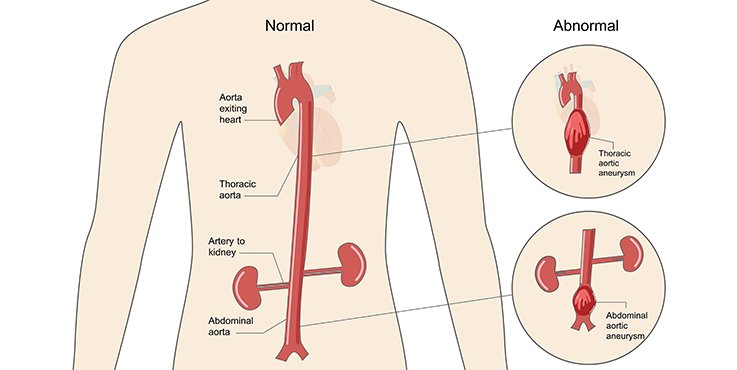Aortic aneurysms: what you should know
- Men who have smoked and people with a family history of aneurysms are at greater risk of developing one.
- Aneurysms can develop before causing symptoms, so screenings are recommended for people from the age of 65 to 75.
There are two primary treatments for aortic aneurysms:
- Medications:
- Statins, a type of medication, are used to lower cholesterol and reduce the amount of plaque buildup in the arteries.
- Beta blockers may be used to slow down the rate of aneurysm growth and risk of rupture (“bursting”).
- Surgery: Many patients are candidates for endovascular surgery, a minimally invasive procedure. Doctors insert a small tube into arteries — often performed without incisions, merely a needle stick — to reinforce weak spots to treat both types of aortic aneurysms.
For patients who aren’t candidates for endovascular surgery, physicians may use open surgery to repair the aneurysm and replace the damaged artery with a long synthetic tube called a graft.
